Mousepads
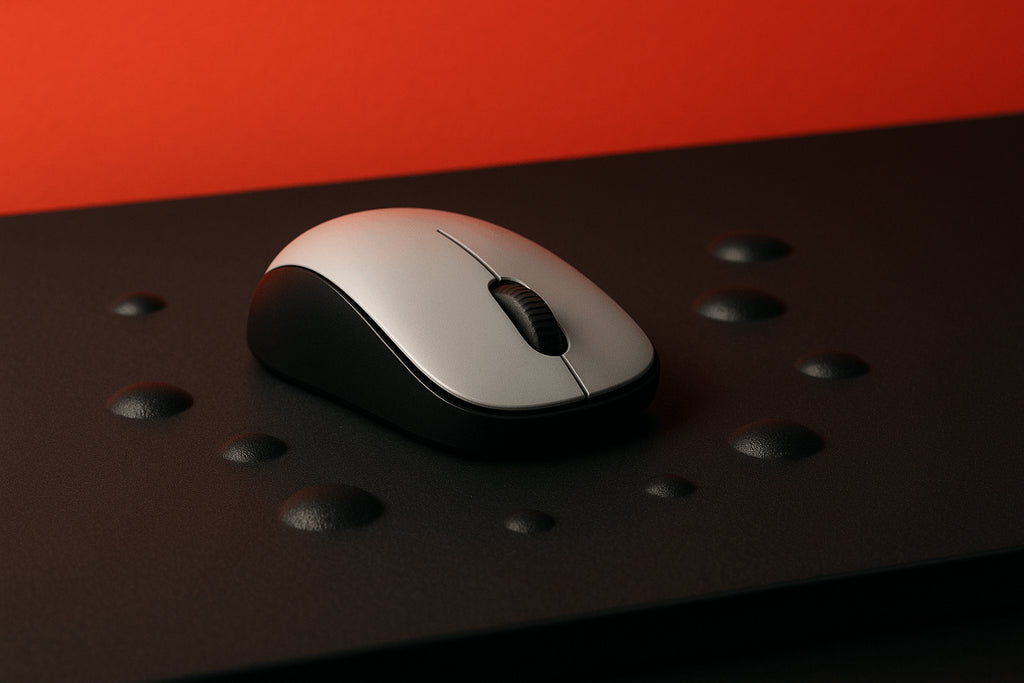
Can Desk Imperfections Affect Mouse Tracking?
If you're using your mouse directly on your desk, surface imperfections can quietly sabotage your performance — especially in gaming, design, or precision-heavy work. Even seemingly minor issues like scratches, grooves, or glossy finishes can throw off sensor tracking and cause jitter or inaccuracy. Why Mouse Sensors Are Sensitive to Surfaces Modern optical and laser sensors track movement by analyzing surface textures. When those textures vary — like on a scratched wooden desk or reflective glass — the mouse receives inconsistent feedback, resulting in: Cursor skipping or jitter Inaccurate flicks during gaming Unreliable movement in creative apps (Photoshop, CAD, etc.)...
Can Desk Imperfections Affect Mouse Tracking?
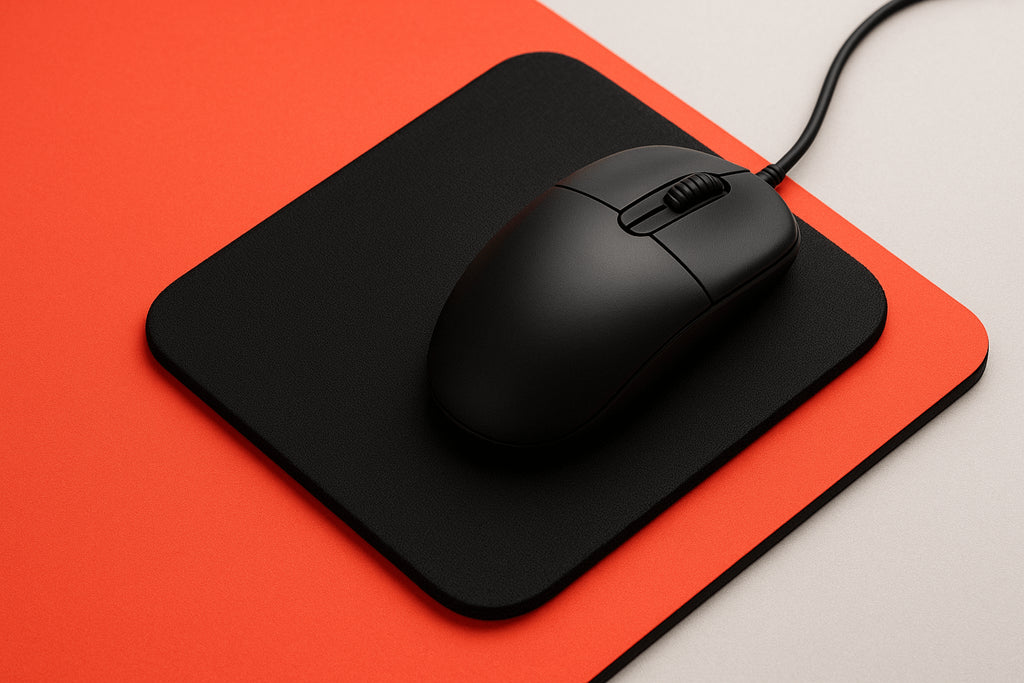
Does Mousepad Thickness Matter? Soft vs. Firm Explained
When shopping for a new mousepad, most people focus on the size and surface texture — but the thickness of a mousepad also plays a major role in how it feels and performs. Whether you're gaming, working, or casually browsing, the right thickness can improve comfort and control. Common Mousepad Thickness Options 2mm (Thin): Sleek and low-profile. Preferred by users who want minimal padding and maximum contact with the desk. 3mm (Standard): Balanced comfort and control — the most common option for both gaming and office use. 4–5mm (Thick): Extra cushioning for long sessions and better wrist support. May feel...
Does Mousepad Thickness Matter? Soft vs. Firm Explained
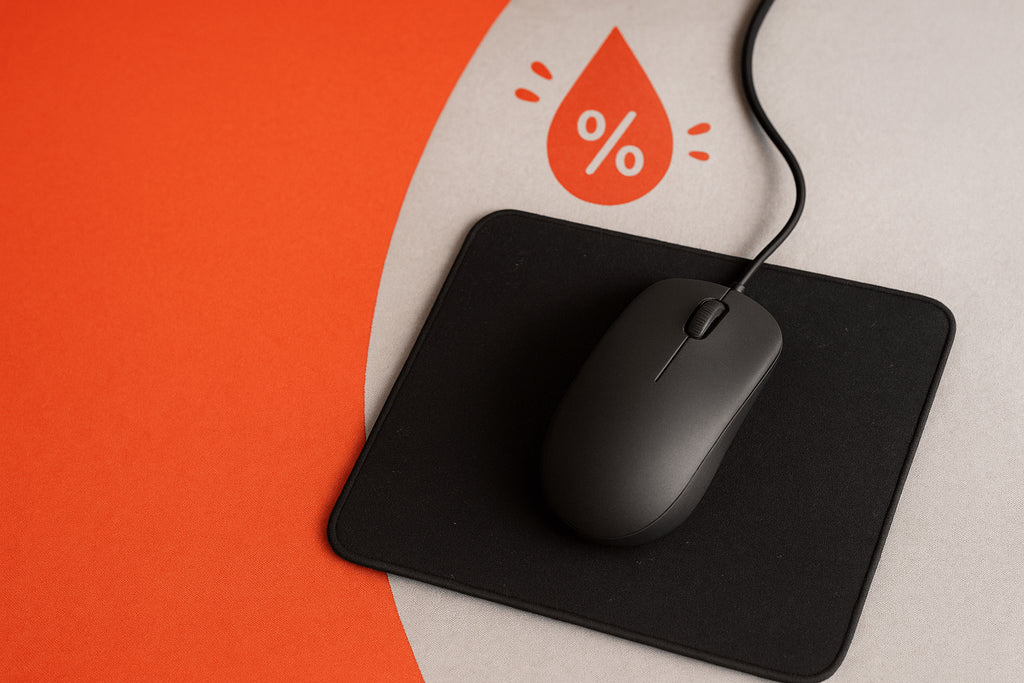
Does Humidity Affect Mousepad Performance?
Humidity may not be the first thing you consider when your mouse starts to feel slow or inconsistent — but it plays a bigger role than most users realize. If your desk setup is in a damp environment, or you live in a region with high humidity, your mousepad’s performance can be noticeably impacted. How Humidity Affects a Mousepad Moisture Absorption: Fabric mousepads can absorb moisture from the air, causing the surface to feel sticky or “draggy.” Inconsistent Glide: The mouse may not glide smoothly, especially during fast flicks in gaming. Tracking Issues: Optical sensors rely on consistent surfaces —...
Does Humidity Affect Mousepad Performance?
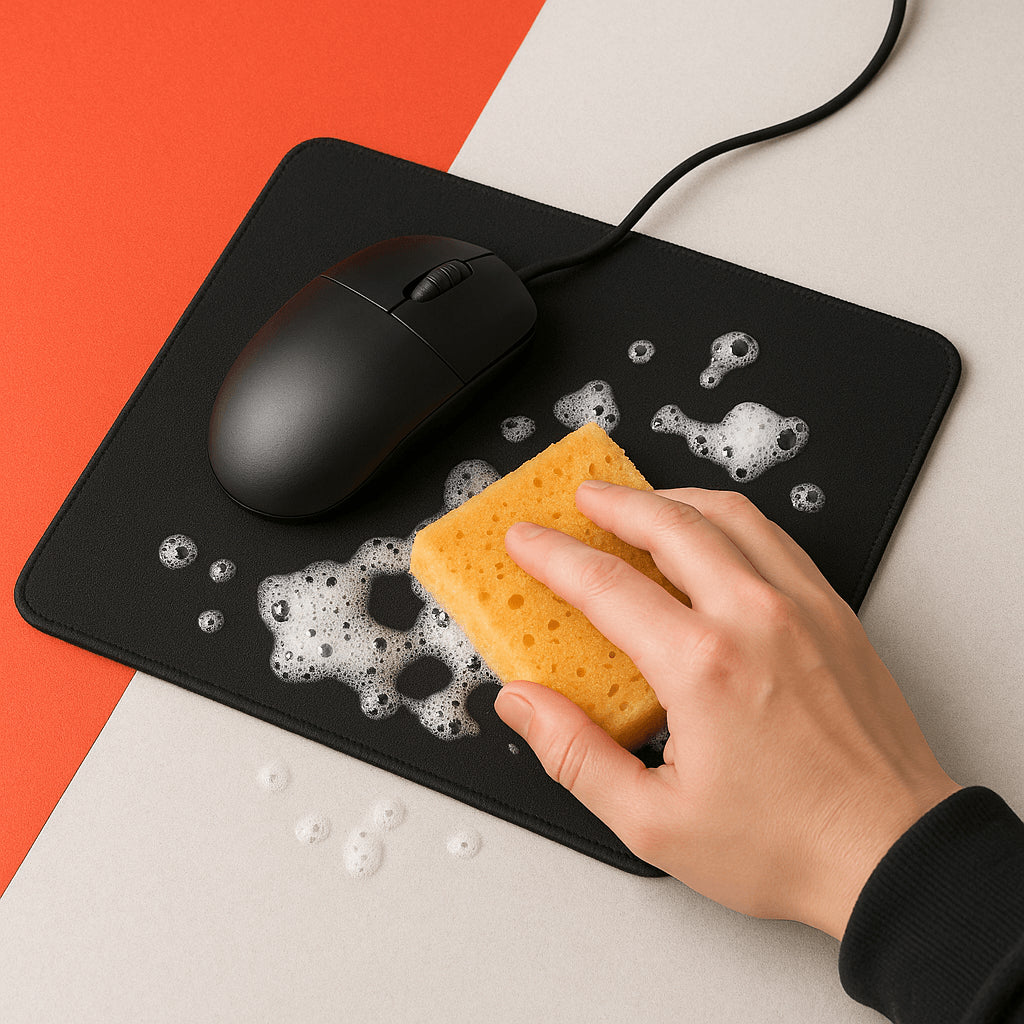
How Often Should You Clean Your Mousepad?
Whether you're gaming daily, working from home, or casually browsing — your mousepad is one of the most used surfaces on your desk. Over time, it collects dust, sweat, skin oils, crumbs, and more. But how often should you actually clean your mousepad to keep it in top shape? General Rule of Thumb For most users, we recommend: Light surface cleaning: once a week Deep cleaning with soap and water: once a month These intervals help prevent build-up that can affect your mouse sensor performance and general desk hygiene. High-Use or Gaming Setups If you’re a gamer or use your...
How Often Should You Clean Your Mousepad?
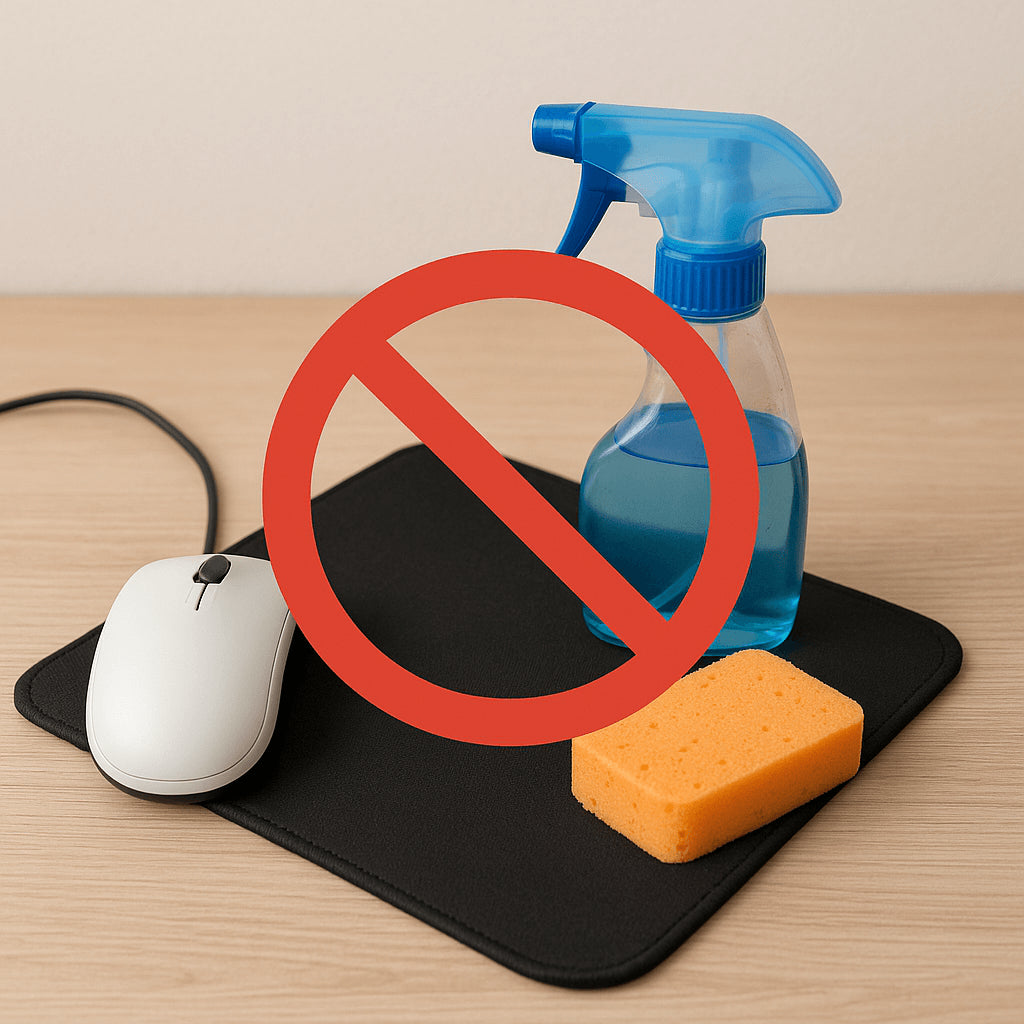
What Cleaning Methods Should You Avoid for Mousepads?
While cleaning your mousepad is important for performance and hygiene, some cleaning methods can actually ruin it. Whether it's a soft fabric-topped pad or a full desk mat with stitched edges, using the wrong products or techniques can shorten its lifespan or cause permanent damage. Common Mistakes to Avoid Hot water or machine drying: High heat can cause rubber to warp or separate from the fabric. Always use lukewarm water and let it air dry flat. Washing machines: Unless explicitly stated by the manufacturer, avoid putting your mousepad in the washing machine — especially with stitched edges or non-slip rubber...
What Cleaning Methods Should You Avoid for Mousepads?
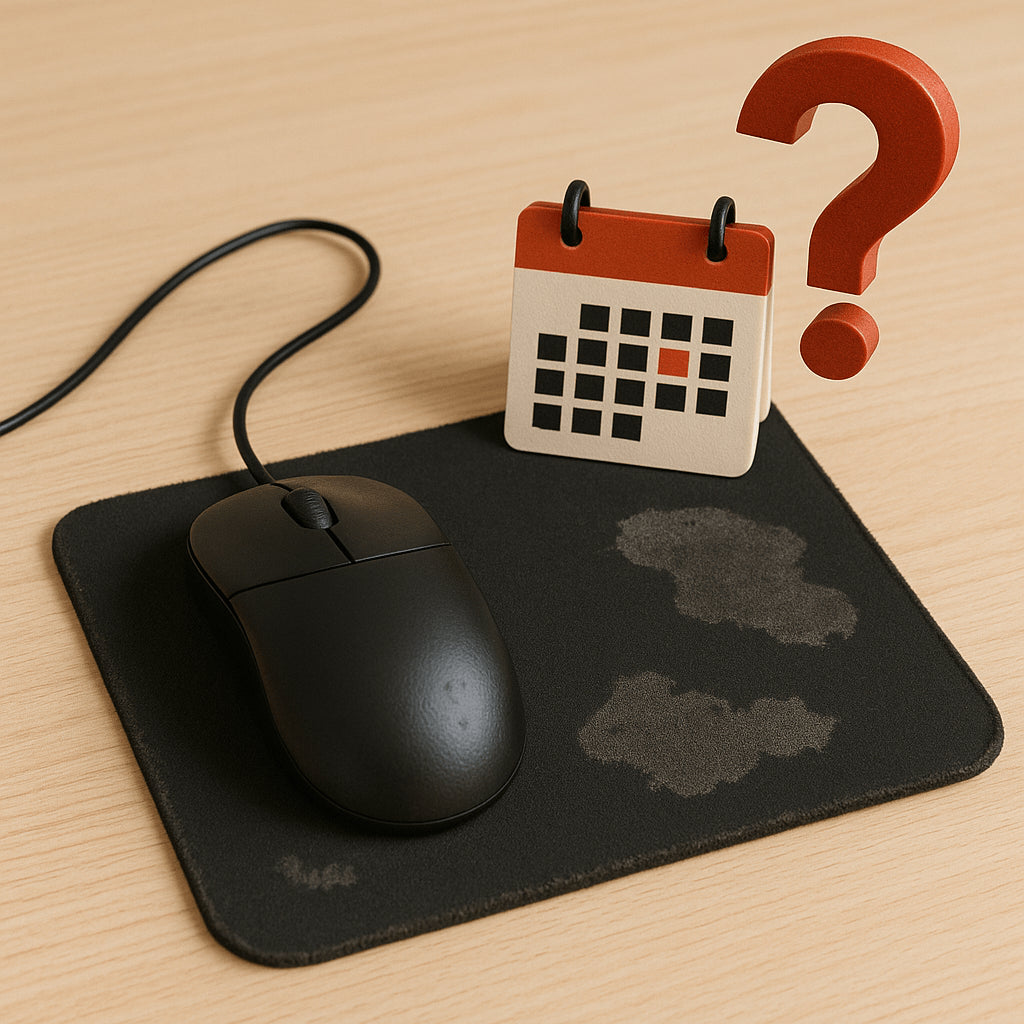
How Often Should I Replace My Mousepad?
A mousepad is one of the most used accessories in any setup — whether you're gaming, designing, or working from home. But how often should you really replace it? The answer depends on material quality, usage patterns, and most importantly: how well you clean it. When Should You Consider Replacing It? You may want to consider a replacement if: The surface feels rough or inconsistent when gliding your mouse There are permanent stains or discoloration The stitched edges are fraying or coming loose The rubber base is peeling or curling Your mouse tracking becomes unreliable How Long Does a Mousepad...
How Often Should I Replace My Mousepad?
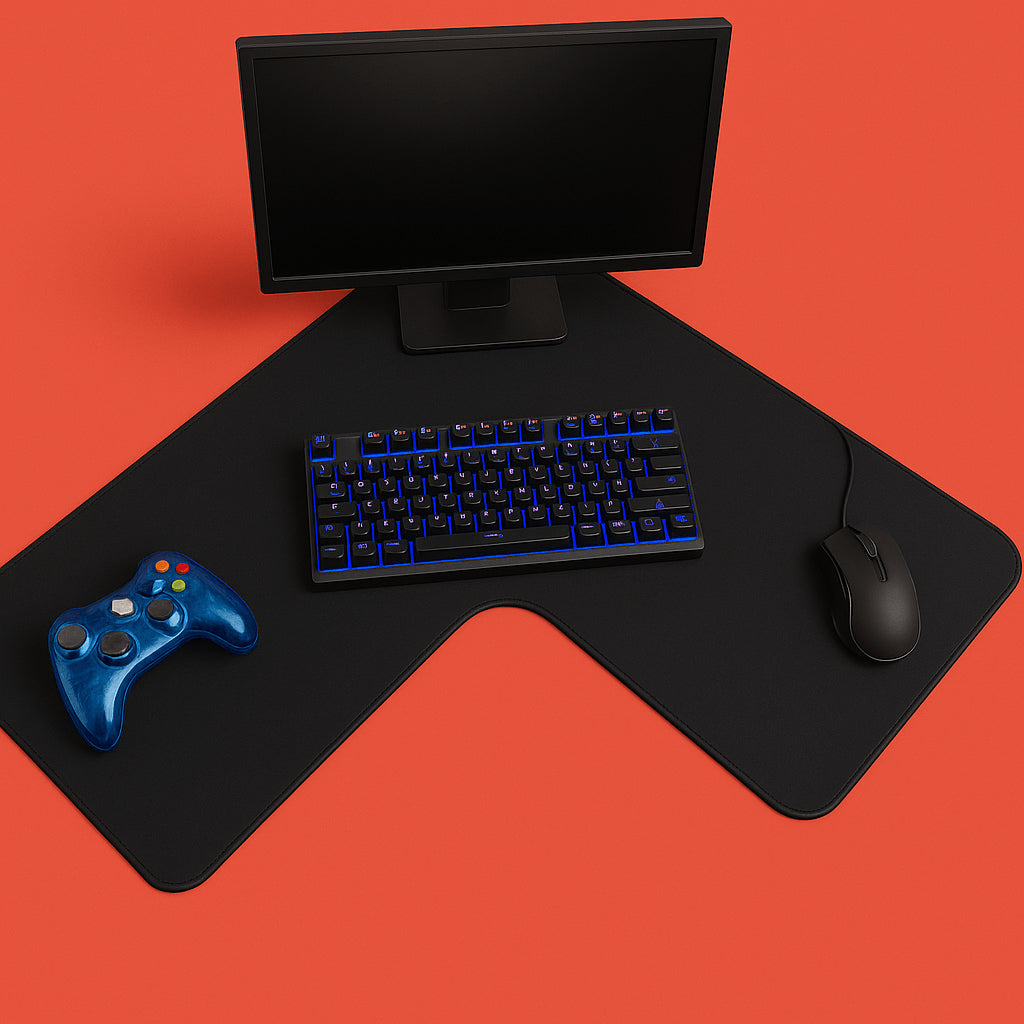
Why Doesn’t an L-Shaped Mousepad Exist?
If you've ever built a corner desk setup or used an L-shaped desk, you’ve probably asked yourself: “Why aren’t there any L-shaped mousepads?” It seems logical — but the answer lies in a mix of user habits, manufacturing limitations, and practical design. 1. Standard Mouse Use Patterns Most users — whether gamers or professionals — use their mouse within a rectangular movement zone. Even on large L-shaped desks, the keyboard and mouse typically remain on one side. There’s little functional reason to extend the pad into the secondary corner segment. 2. Manufacturing Constraints Most large-format printers and heat presses are...
Why Doesn’t an L-Shaped Mousepad Exist?
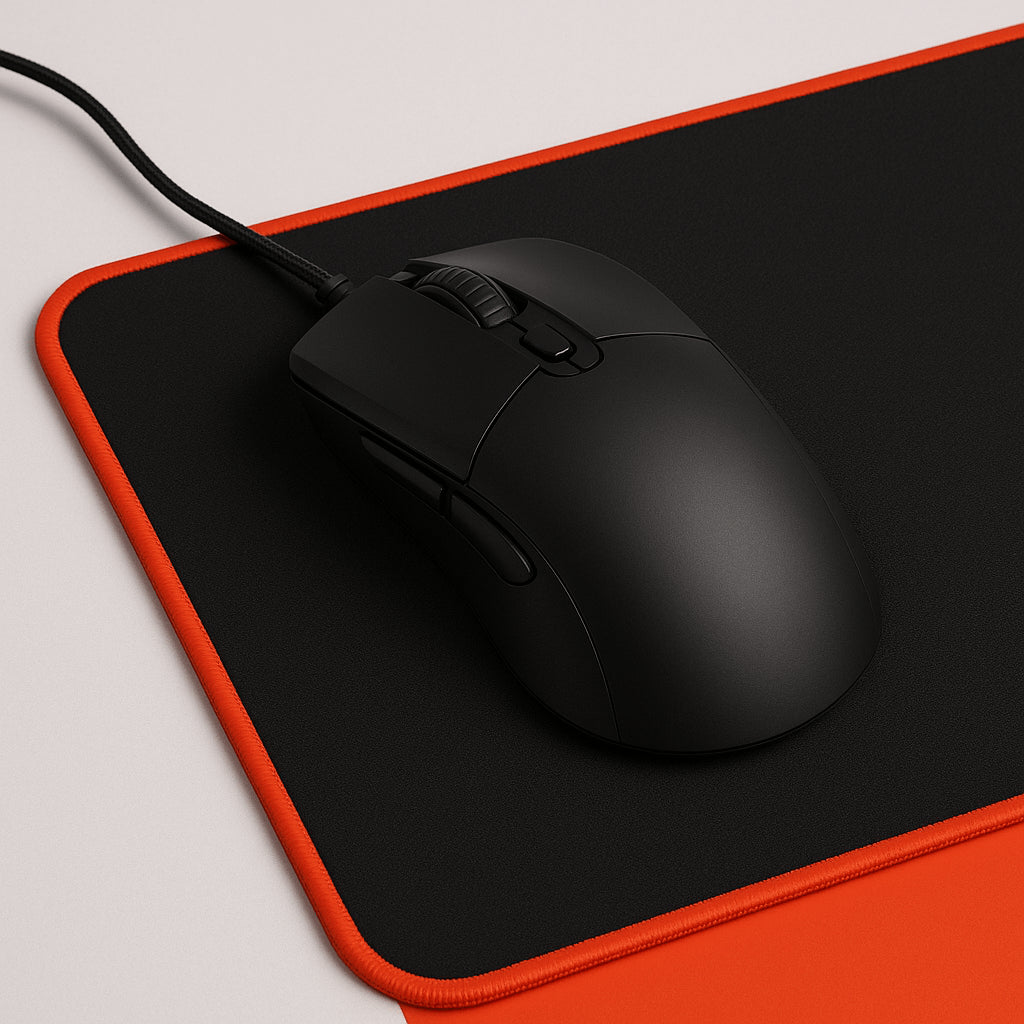
What Makes a Mousepad Precise or High-Performance?
If you're a gamer, designer, or someone who values responsive input, your mousepad plays a bigger role than you think. But what exactly makes a mousepad “precise” or high-performance? Let’s break down the features that truly matter for accuracy, consistency, and control. 1. Surface Texture & Finish The surface of a mousepad determines how your mouse sensor tracks movement. High-performance mousepads offer a uniform, micro-textured surface that provides consistent glide and accurate sensor readings — especially for high DPI settings. 2. Glide Consistency A premium mousepad should allow your mouse to glide smoothly across the entire surface without any friction...
What Makes a Mousepad Precise or High-Performance?
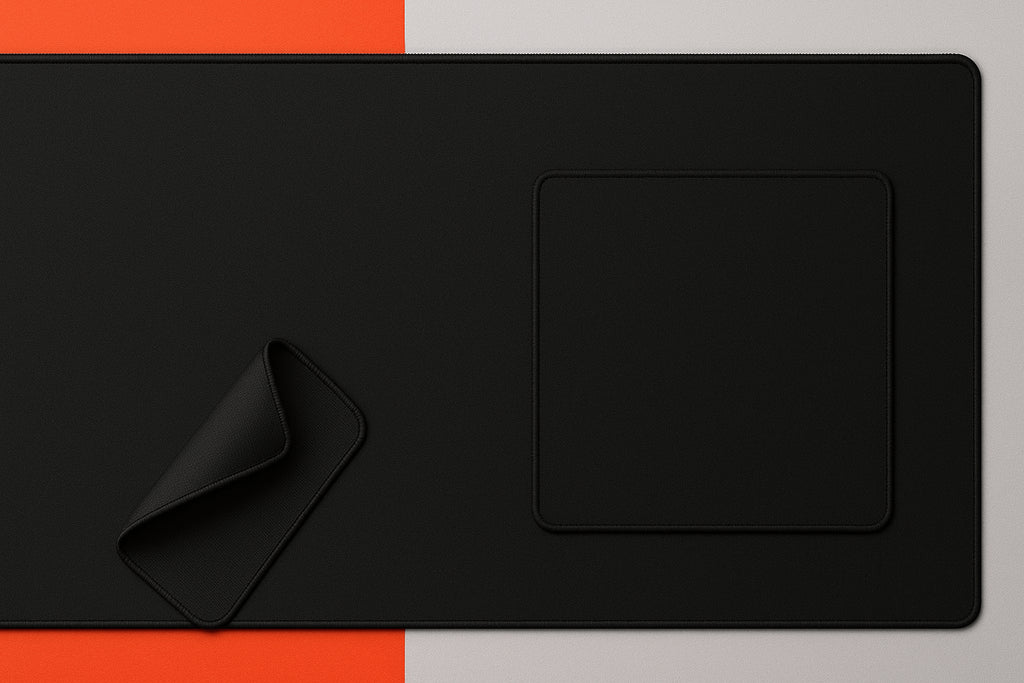
How Important Are Stitched Edges for Mousepad Durability?
When shopping for a new mousepad, you’ll often see “stitched edges” listed as a feature. But what does it actually mean for durability — and should it influence your buying decision? In this guide, we’ll explore why stitched edges matter and when they make the biggest difference. What Are Stitched Edges? Stitched edges are reinforced seams sewn along the border of a mousepad. They protect the edge from fraying over time due to movement, washing, and general wear and tear. While unstitched mousepads might look cleaner initially, they often degrade faster. Benefits of Stitched Edges Prevents Fraying: Stops the cloth...
How Important Are Stitched Edges for Mousepad Durability?
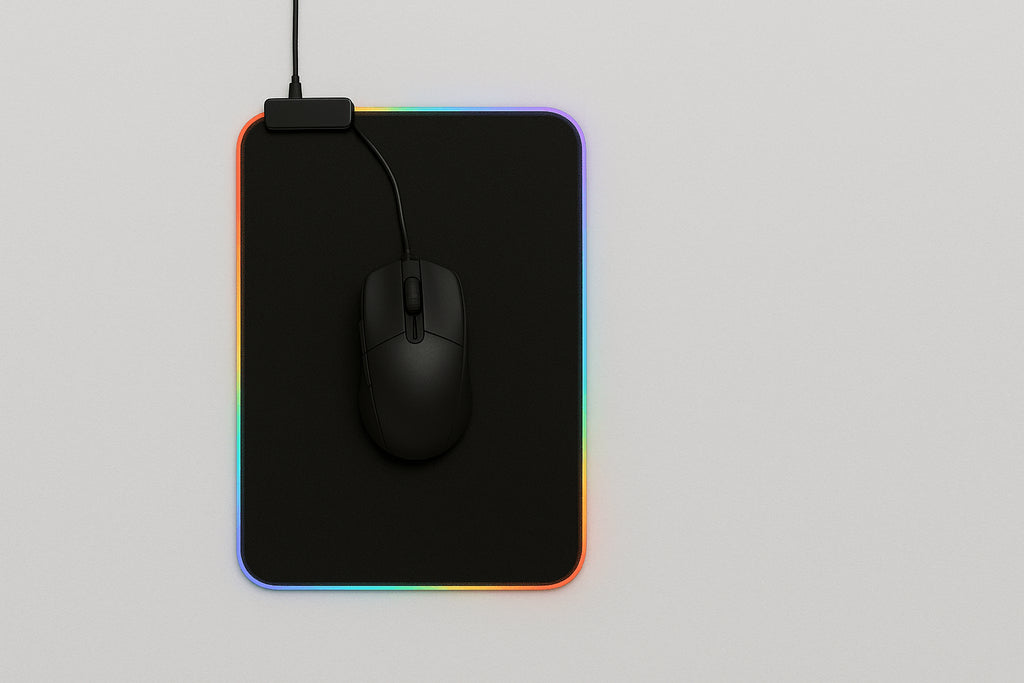
Are RGB Mousepads Worth It? Pros, Cons, and Alternatives
RGB mousepads are increasingly popular, especially among gamers and streamers who want their setup to glow with personality. But are they actually worth buying? Or are they just an overpriced gimmick? Let’s break down the pros, cons, and what the community really thinks. What is an RGB Mousepad? An RGB mousepad is a standard cloth or hard-surface mousepad that includes LED lighting around the edges. Most models connect to your PC via USB and can sync lighting with other RGB devices like your keyboard, mouse, or headset. Pros of RGB Mousepads Visual appeal: Adds aesthetic value to RGB setups and...
Are RGB Mousepads Worth It? Pros, Cons, and Alternatives
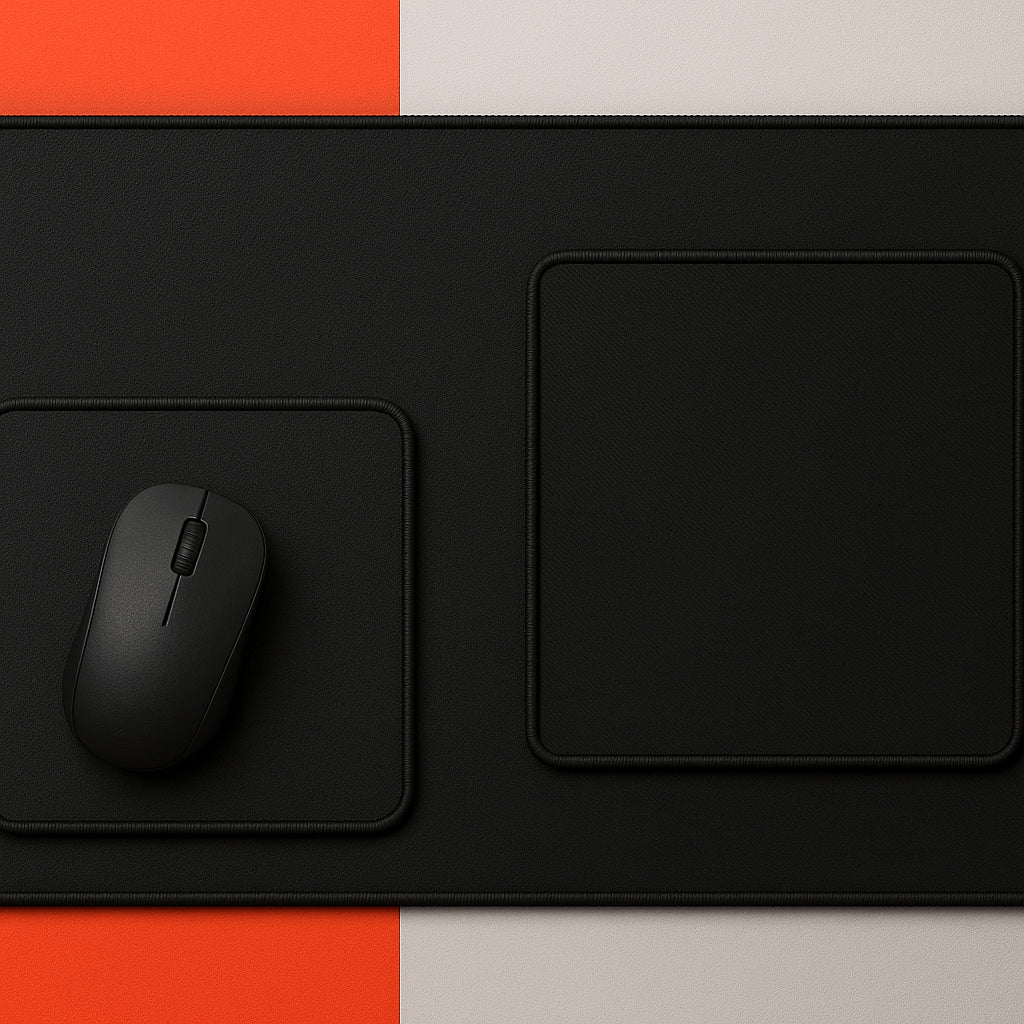
What Size Mousepad Should I Get for My Setup?
Mousepads come in all shapes and sizes—so how do you know which one fits your setup? Whether you're a gamer, remote worker, or minimalist, the right mousepad can make your desk feel more comfortable and organized. Common Mousepad Sizes Small (250x210mm) – Ideal for compact desks or just mouse-only movement. Great for casual users or travel setups. Medium (360x300mm) – A balanced choice if you want more space without taking over your entire desk. Large (450x400mm) – Excellent for hybrid setups where you use both mouse and keyboard on the same surface. XXL / Deskmat (900x400mm or larger) – Covers...
What Size Mousepad Should I Get for My Setup?

What Really Stains My Mousepad? Common Causes and Cleaning Tips
Ever looked down at your mousepad and wondered why it looks faded, greasy, or discolored—even though you clean it now and then? You're not alone. Here’s a breakdown of what causes mousepad stains and how to prevent them. Main Causes of Mousepad Staining Natural skin oils and sweat – Your hands, wrists, and forearms constantly touch the pad. Sweat and skin oil are the top long-term staining culprits. Greasy food residue – Eating at your desk? Chips, pizza, or anything fried leaves invisible smudges that gradually soak into the fabric. Drink spills and condensation – Cold drinks leave rings or...

